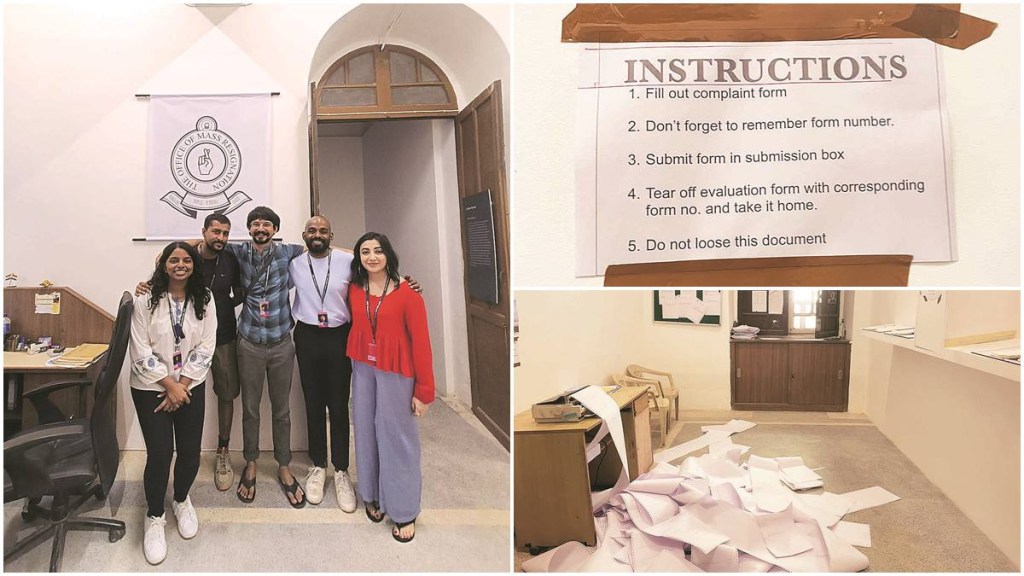It’s an empty office. Devoid of humans, but fully functional. The instructions are mapped out, clear and concise. Fill out the complaint form, submit it in the complaint box, collect the response from the fax machine that’s churning out reams of paper incessantly, untended and unsupervised. And follow the last instruction: do not ‘loose’ the document.
This is the Office of Mass Resignations, symbolic of the human disassociation at many workplaces today—be it the lockdown-induced ghost spaces, the reluctance to readapt to prepandemic norms, or the misplaced notions of the permanence of a virtual world— resulting in a spate of resignations or just quiet quitting.
Also Read: Flexible workspaces bring in the ‘flex’ factor for IT companies in India
For the group of Sri Lankan artists called The Packet, the project—displayed at the Serendipity Arts Festival that just concluded in Goa—might be inspired by the bureaucratic frustration of a population entrapped in the global south, but it is a representation of a post-pandemic world that has an apocalyptic tone. Like chairs but no people, and an office notice board with memos announcing picnics and rapping staff for stolen tiffins, reminiscent of erstwhile human presence. What remains personified, and tragically so, is the bureaucracy alone.
Says Imaad Majeed of The Packet: “We build on the theme of a wasteland, and the idea of escape. Responding to the notion of active disassociation, which is a popular trend among the younger generation, some of whom are disassociating on a cue, was born the idea of a mass resignation—some of it actual, and much of it aspirational.”
Also Read: Apple to allow employees to talk freely about workplace issues
Because, as Abdul Halik Azeez points at the dissonance and disparity in the global south and global north, “Not everyone can quit jobs. The West is different. There are people who can afford to quit. But in places like Sri Lanka, the office becomes a reality in which you are trapped. We can’t afford not to work, and we find work wherever we get it or make do with whatever our situations are.” He recalls how in the midst of the island country’s economic crisis, people lined up in serpentine queues outside passport and visa offices, trying to get out of the country, but mostly encountered state bureaucracy and a cold assessment of their eligibility that was not human in the least.
That coldness is reflected in the project, where people’s feelings are transferred onto a piece of paper, deposited in an impersonal box and a machine processes an evaluation. An employee’s resignation letter pegged on the notice board is a chilling reminder of the frustrations of the global workforce. “Months after the abandoning of operations, and much to the surprise of the senior management, the machinery of our office continues to function. I do not know who ensures this, there is no one here…Today is my last day…”








